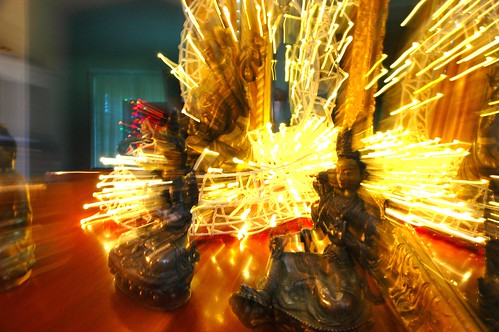 The diagnostic process in health care is, at it’s most basic level, an example of the scientific method in action. Data is collected, a hypothesis is tested, and a diagnosis is made in order to then provide the patient with the most effective and appropriate treatment intervention.
The diagnostic process in health care is, at it’s most basic level, an example of the scientific method in action. Data is collected, a hypothesis is tested, and a diagnosis is made in order to then provide the patient with the most effective and appropriate treatment intervention.
Health care currently exists in a reductionist world. The goal has always been to understand complex problems by reducing them to the interaction of the parts. Virtually all health care providers are taught to think in terms of a patho-anatomical model – in terms of tissues, diseases and conditions. But the textbook cases rarely exist. If the clinician can’t put the patient into a nice, neat category, then what do they do? What happens when you can’t push that square peg of clinical presentation into the round hole of diagnosis?
Sadly, the scientific method has the answer: it is a failure of the patho-anatomical model, and of our own thinking.
It’s a common occurrence – the patient presents with a cluster of signs and symptoms that, quite frankly, confound even the most experienced and well-trained clinician. The clinical presentation simply refuses to fit the patho-anatomical model that the clinician has been taught. Perhaps more and more data is collected, and still no answers prevail.
At this point, even if the clinician has no understanding of the system as a whole, he/she will will likely throw out treatment interventions willy-nilly, hoping that something works. And guess what? With an approach like this, you get much the same results as a gambling trip to Las Vegas.
“Yet it looks as if the thing we use to solve our problems with is the source of our problems. It's like going to the doctor and having him make you ill. In fact, in 20% of medical cases we do apparently have that going on. But in the case of thought, its far over 20%.” (David Bohm, quantum physicist)
A simple example of the failure of reductionist thinking is that of a broken mirror. We all know what a mirror looks like, but what happens when you break a mirror and try to put it back together? Can you ever do so such that it looks like it did when it was originally unbroken? Close, but not quite. As hard as you might try, you won’t get it back to its original state.
The patho-anatomical model fails in the same way. When a clinical presentation simply doesn’t fit a patho-anatomical model, do you keep trying to jam it into a diagnostic category, or do you look to find a better way to think and to view the problem?
This is readily apparent in the world of musculoskeletal disorders. Physical therapists and chiropractors and physicians alike all look for biomechanical mal-alignments and muscle imbalances that “surely” must be related to the onset of the patient’s problem. They develop countless “syndromes” that are just a cluster of signs and symptoms that happen to occur in similar space and time – nothing more, nothing less. Then, in their guru-fixer role, they treat these conditions with treatment methods that have little or no relevance and are based on nothing more than some loosely-developed hypothetical construct that has been derived from, you guessed it, the clinical presentation that has yet to be understood in the first place.
Scientific method, indeed.
"A great many people think they are thinking when they are merely rearranging their prejudices." (Bohm)
If we are going to have a comprehensive system of health and health care, of assessment and treatment, it has to have the ability to account for all the cases. Reductionist thinking – by way of patho-anatomy – is not the solution.
The solution lies in understanding the behavior of the system as a whole. A comprehensive system of health and health care needs to look to systems thinking for the next great revolution. Fortunately, we already have Mechanical Diagnosis And Therapy – a true systems approach to disorders of the musculoskeletal system.
Much as quantum mechanics has revolutionized the world of physics, MDT will revolutionize how we approach the world of musculoskeletal medicine. In an upcoming article, I will discuss how MDT accomplishes this in a patient-centered way.
Photo credits: Wonderlane

 "Running Injuries: Etiology And Recovery- Based Treatment" (co-author Bridget Clark, PT) appears in the third edition and fourth editions of "Clinical Orthopaedic Rehabilitation: A Team Approach" by Charles Giangarra, MD and Robert C. Manske, PT.
"Running Injuries: Etiology And Recovery- Based Treatment" (co-author Bridget Clark, PT) appears in the third edition and fourth editions of "Clinical Orthopaedic Rehabilitation: A Team Approach" by Charles Giangarra, MD and Robert C. Manske, PT.
 Allan Besselink, PT, DPT, Ph.D., Dip.MDT has a unique voice in the world of sports, education, and health care. Read more about Allan here.
Allan Besselink, PT, DPT, Ph.D., Dip.MDT has a unique voice in the world of sports, education, and health care. Read more about Allan here.
 Top 5 finalist in three categories: "Best Overall Blog", "Best PT Blog" and "Best Advocacy Blog".
Top 5 finalist in three categories: "Best Overall Blog", "Best PT Blog" and "Best Advocacy Blog".